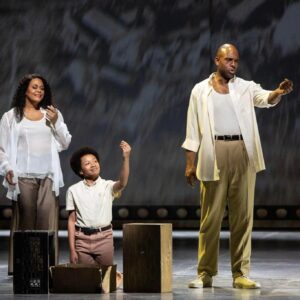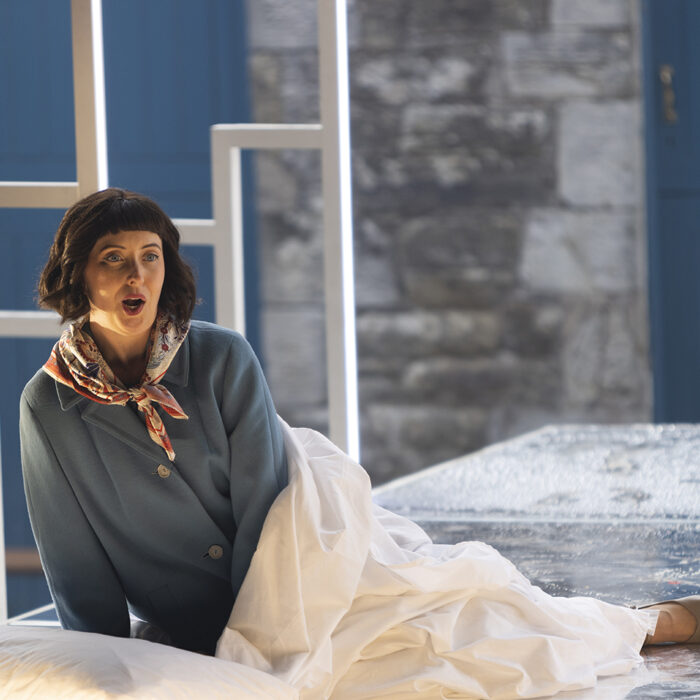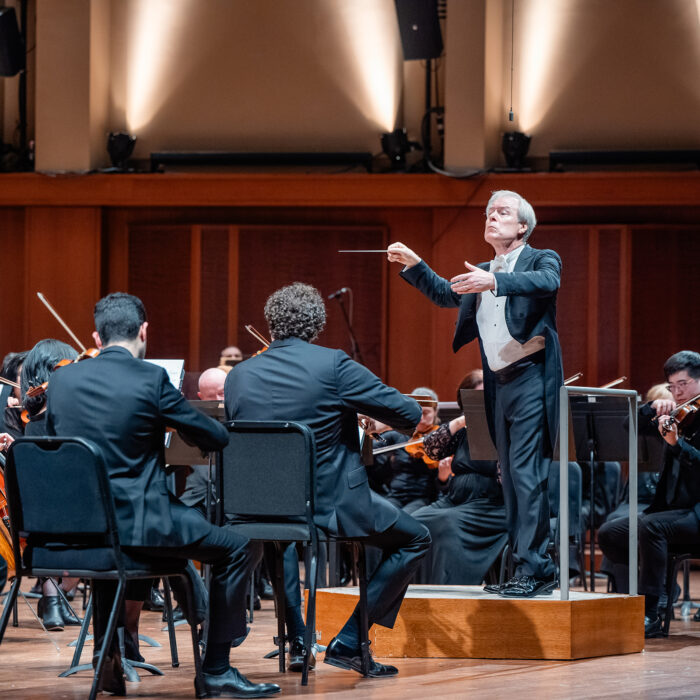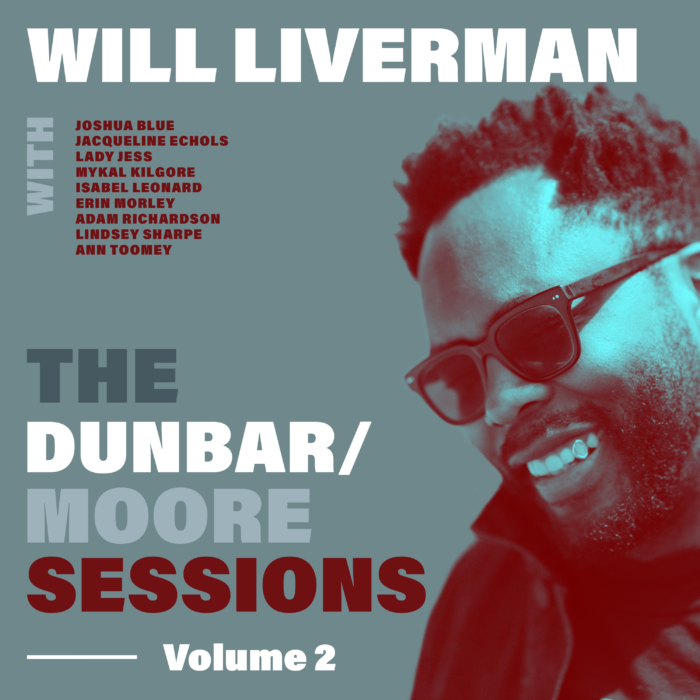
Metropolitan Opera 2023-24 Review: Fire Shut Up in My Bones
Ryan Speedo Green and Latonia Moore Triumph in Terence Blanchard’s Opera
By Chris RuelPerhaps it was the eclipse, an event typically devoid of human influence, yet on the evening of April 8, 2024, it seemed to cast an otherworldly aura over Terence Blanchard and Kasi Lemmons’ production of “Fire Shut Up in My Bones.” The production premiered at Opera Theatre of Saint Louis in 2019 before moving to the Met to sold-out audiences in 2021. This year’s production, now three years later, is a testament to the power of new works.
The enchantment of the performance extended beyond the narrative itself, weaving through the spellbinding delivery of the esteemed cast. With their voices as the vehicle, they ushered the audience into the intricate world of Charles M. Blow. Adapted from Blow’s memoir, the production skillfully navigated through the journey of his life, evoking echoes of a Dickensian narrative.
The introduction of Charles as an adult, portrayed with intensity by Ryan Speedo Greene, sets the stage for a gripping narrative. His anguished demeanor, coupled with the ominous presence of a gun, hinted at a deeper turmoil simmering beneath the surface. As Charles conversed with Destiny (performed by Brittany Renee), the scene transitioned seamlessly, transporting the audience to the dilapidated confines of the Blow family home in Gibsland, Louisiana.
Here, the audience is introduced to Char’es-Baby, the younger incarnation of Charles, portrayed with remarkable poise and talent by Ethan Joseph. His ethereal voice resonated through the theater, commanding attention as he took center stage.
The narrative arc delved into Char’es-Baby’s quest to break free from the confines of his childhood loneliness, yearning to shed the moniker that bound him to infancy. Latonia Moore’s portrayal of Billie, his mother, offered a poignant portrayal of single parenthood. Billie grappled with the complexities of love and loss amid a volatile relationship with Spinner, her deadbeat, serial philandering husband, brought to life with smarmy charm by Chauncey Packer.
It was within the nurturing guidance of his Uncle Paul, a farmer portrayed with warmth and wisdom by Kevin Short, that Char’es-Baby found solace and strength. Their scenes unfolded with tender sincerity, each moment a map for moving forward. Uncle Paul told Char’es-Baby that a hoe breaks apart hard earth so seeds may grow. “…You gotta disturb the earth so things can grow,” he sang. Yet, in that moment, Char’es-Baby could only see the surface, not the wisdom hidden below it.
Amid the tender moments of Act one, the shadow of darkness, embodied in the unsettling presence of cousin Chester, was portrayed as a sexual predator lurking within the familial fold—his prey, Char’es-Baby. Chester’s despicable actions cast a pall over Char’es-Baby’s innocence, leaving scars that would linger long after Act one reached its conclusion.
As the curtains fell, the audience was left to ponder the unanswered questions that lingered in the air. The mysteries surrounding Charles’s journey, the enigmatic figures that guided his path, and the underlying themes of growth and resilience remained tantalizingly unresolved.
In contrast to the intensity of Act one, Act two lacked the visceral impact that had left the audience reeling. After the gut-wrenching journey of the previous act, the narrative relieved the audience from the emotional onslaught.
In Act two, the story catapulted to Charles’s high school years, where simmering anger and deep-seated vengeance clouded his future with uncertainty. The lingering “stain” left by Cousin Chester remained an indelible mark, akin to Lady Macbeth’s infamous spot that defied erasure. Despite seeking solace in baptism, Charles found that absolution remained elusive, his soul still weighed down by shame, guilt, and a profound sense of alienation.
Despite the weightiness of his inner turmoil, Act two exuded a sense of jubilation, underscored by the spirited presence of a gospel choir clad in flowing robes. Their exuberant praises extolling the cleansing power of baptism filled the air, infusing the scene with an infectious energy. Even Charles, though reserved, found himself swept up in the buoyant atmosphere as he prepared for his immersion. And when the ritual was complete, the choir erupted into a joyous anthem celebrating the purification of sins. But Charles sensed that nothing had changed. He hadn’t been cleansed, and so his quest for redemption continued.
The act reached its crescendo with Charles’s acceptance letter to Grambling State University, hope amid the storm of his adolescence. Grambling’s full scholarship offer alleviated Billie’s financial burden, igniting renewed excitement and optimism. Yet, amidst the celebrations, Destiny’s sobering presence loomed, delivering a stark reminder that true redemption was not easily attained. Act two drew to a close as she imparted the harsh truth that some wounds may never fully heal, leaving Charles and the audience grappling with the weight of unrelenting pain and the elusive pursuit of inner peace.
The final act unfolds with a spellbinding display, commencing with the electrifying “step dancing” tradition within historically Black fraternities, such as Kappa Alpha Psi. The stage pulsated with energy as brothers executed intricate footwork, accompanied by the resounding clack of canes striking the floor. This awe-inspiring sight momentarily transported spectators from the weight of reality.
Charles’s journey takes a turn as he embarks on the path to fraternity membership, enduring the trials of Hell Week with stoic determination. Emerging as a full-fledged Kappa, he embraces the fraternity’s ethos of resilience, embodying the mantra of strength in the face of adversity and its promise of companionship.
Amidst the revelry, Charles encounters Greta, portrayed by Brittany Renee, igniting a passionate connection that unfolds behind closed doors. In a moment of vulnerability, Charles unveils the haunting secret of Chester’s assault, only to be met with Greta’s abrupt withdrawal. This revelation leaves him reeling with heartache and confusion.
As the opera reaches its crescendo, Charles’s anguish reaches a boiling point with Chester’s ominous return, sparking a confrontation teeming with raw emotion and simmering rage. In a scene fraught with intensity, Charles confronts the specter of his past, wielding a gun against an unseen adversary, as a projection of Route 20 looms ominously in the background.
The narrative threads woven throughout Act one begin to unravel, offering glimpses of resolution amidst the chaos. Charles’s encounter with Char’es-Baby at his old home in Gibsland is a poignant reminder of the journey toward self-redemption as he confronts the bitterness and anger that have long plagued his heart.
As the final curtain descends, lingering questions remain: Will Charles succumb to the cycle of violence that threatens to consume him, or will he heed the lessons of resilience and forgiveness, forging a path toward healing and renewal? The answer remains uncertain, leaving audiences to ponder the fate of our troubled protagonist—a testament to the enduring power of Terence Blanchard and Kasi Lemmons’ evocative narrative.
Blanchard’s score resonated with cinematic grandeur, weaving together sweeping strings, distinctive motifs for each character, and a rare sense of drama seldom found in contemporary operatic compositions. While many struggled to reconcile traditional repertoire with modern sensibilities, Blanchard’s ability to seamlessly blend music and lyrics offered a striking portrayal of Charles’s world, drawing audiences into a captivating soundscape. As a highly esteemed jazz musician, Blanchard infused the score with vibrant jazz riffs, creating a multi-dimensional musical experience that left a lasting impression.
Under the baton of Evan Rogister, the Met Orchestra played their finest, tackling the challenges of Blanchard’s classically inspired jazz-infused score with remarkable skill and dedication. Rogister’s triumphant demeanor after the performance spoke volumes, a testament to the orchestra’s unwavering commitment and impeccable execution.
In the role of Charles, Ryan Speedo Green delivered a tour de force performance, commanding the stage with raw intensity and emotional depth. Green’s portrayal struck a chord of relatability, drawing audiences into Charles’s tumultuous journey with unwavering authenticity and brilliance. Opposite Green, Ethan Joseph’s portrayal of Char’es-Baby was nothing short of mesmerizing. His ethereal voice captured the essence of Charles’s haunted past with haunting precision. Green and Joseph formed a dynamic duo, their performances complemented each other in a dazzling display of artistry and chemistry.
In the role of Billie, Latonia Moore truly owned her character. She was a mother juggling a job and five kids, and her dreams of becoming a teacher were placed on hold while she reared her children. The lack of affection Billie showed to Char’es-Baby wasn’t callousness. She was careworn, tired, and at wit’s end when dealing with Spinner, her player husband. Moore infused the role with compassion, humor, and warmth. She was loyal, hunting down Spinner at a club, confronting the woman first before addressing her husband’s infidelity. There was no sense that she wanted to escape her circumstances, but she wanted to improve them for herself and her family.
Brittany Renee faced the daunting task of portraying three distinct characters. As Destiny, she served as Charles’ guide, leading him through the labyrinth of his emotions. Transitioning to the role of Loneliness, Renee skillfully amplified the depth of Charles’ longing for companionship, infusing each scene with poignant resonance. This complexity reached its zenith in her portrayal of Greta during Act three. Renee deftly depicted Greta as a reflection of Billie’s emotional unavailability, her presence serving as a stark reminder of Charles’ longing for genuine connection. Despite her temporary availability, Greta ultimately abandons Charles to return to her boyfriend. Renee’s portrayal exuded a nuanced and enigmatic quality, leaving the audience questioning the sincerity of her motives.
“Fire Shut Up in My Bones” is a must-see and a highlight of the Met’s season. Once more, it demonstrates the power of contemporary opera within the art form and its importance to box office revenue. With more new shows coming down the pike, New York’s staid opera house is slowly turning the ship towards giving new audiences a different opera experience than ever before.


